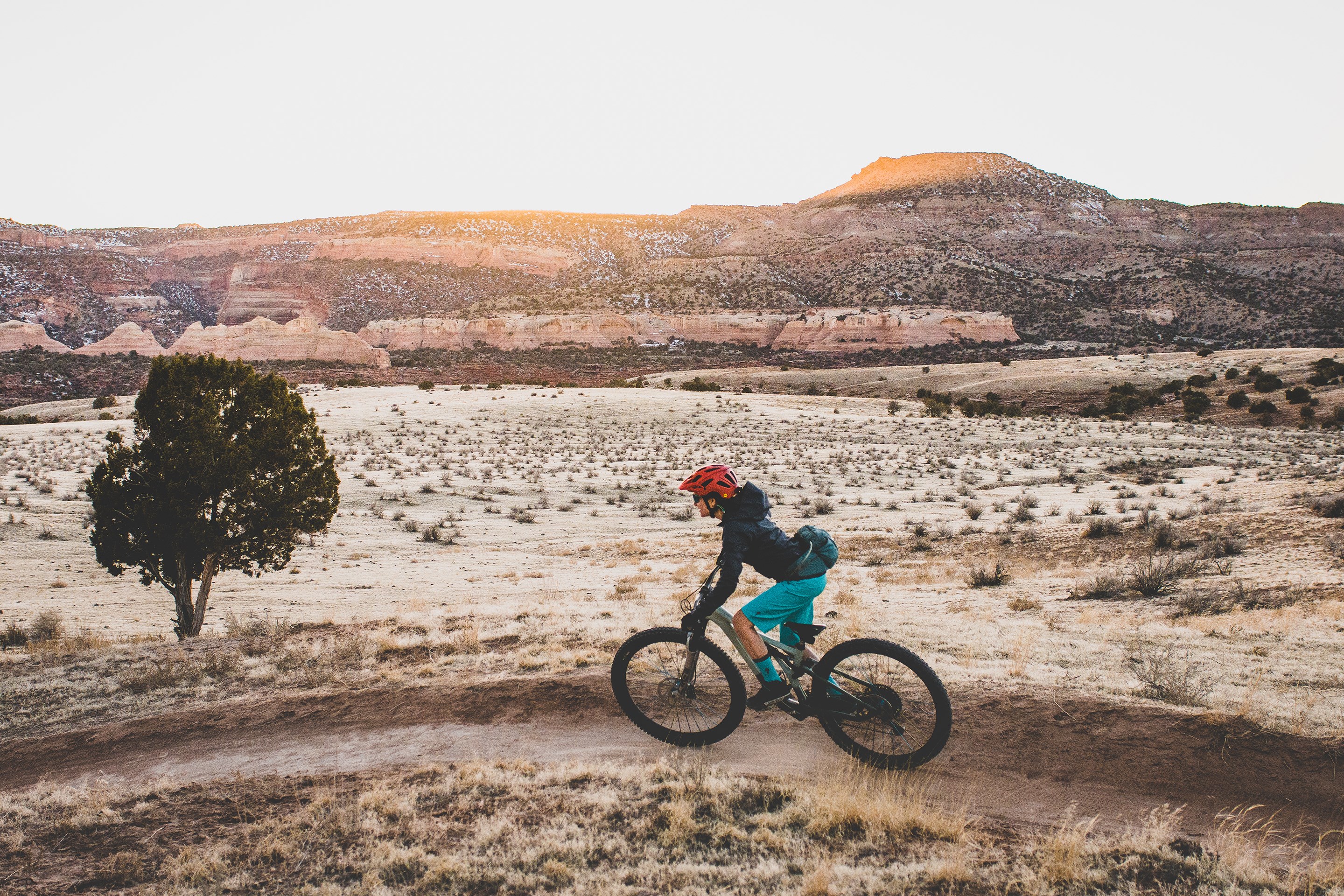RESTORING MUTUALITY WITH MOTHER EARTH
Renee Hutchens
Renee Hutchens, a mountain biker and member of the Diné (Navajo) Nation, is driven by a passion for justice— for Indigenous peoples and the land. At the heart of her activism is her oral tradition. As a storyteller, she advocates for the inclusion of Indigenous peoples and their stories in the cycling and outdoor industry using various forms of narrative: writing, film, photography, social media, and mixed media artwork.
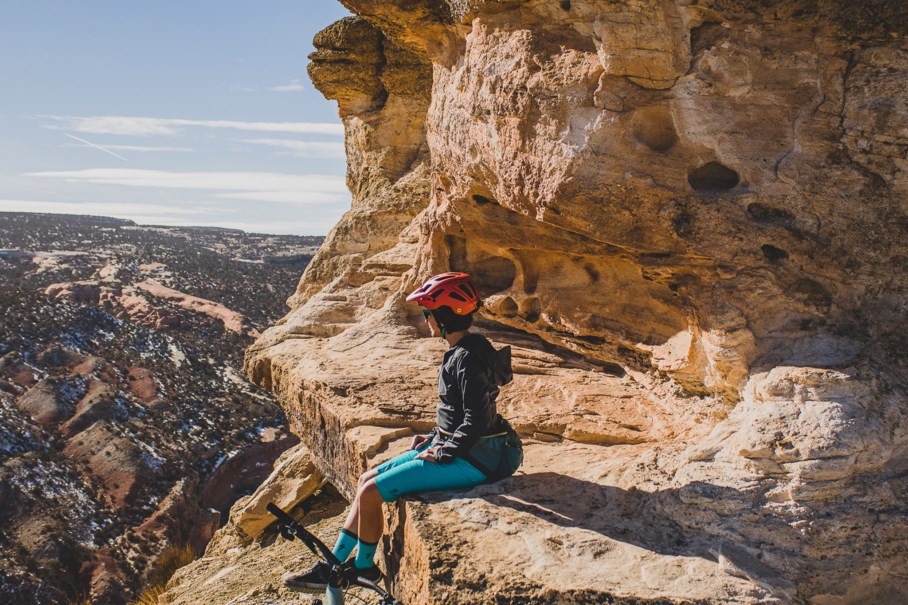
No matter who we are, our background, bike choice, skill level, or the reason why we ride, the one thing mountain bikers have a common connection with is what our two wheels touch— the land. Our dependency on the earth can sometimes be forgotten until we pause to consider what it provides— the food, water, air, and shelter we need to survive. For Indigenous peoples, we would also add, our cultures and lifeways which hold our traditional knowledge. The land’s nurturing and life-giving force is why my Diné (Navajo) people call this place of connection, Nihimá (our Mother) Nahasdzáán (Earth). It is here I feel the most alive, balanced, connected, and strong. This is one of the many ways she cares for me today.
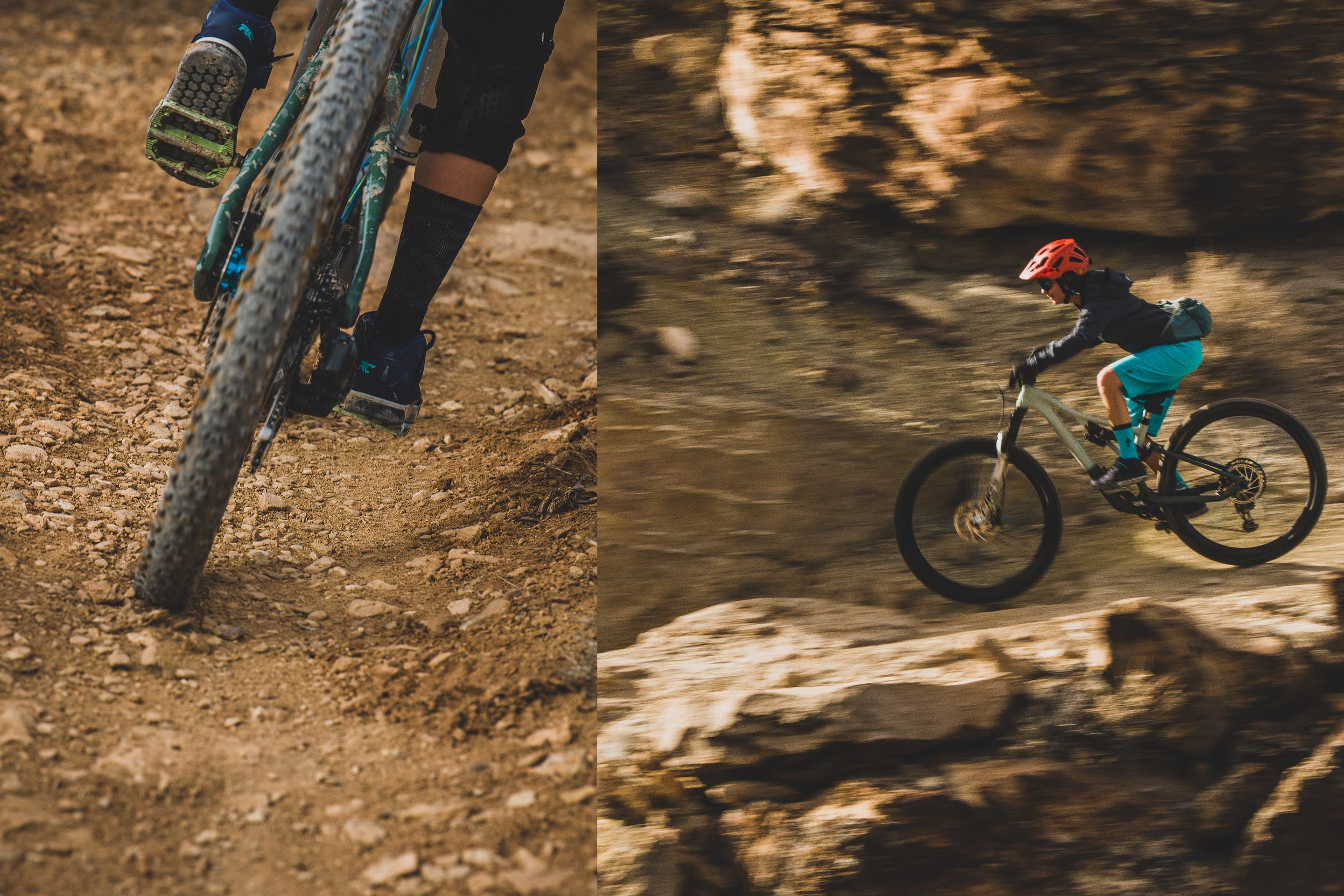
On my bike, my tires feel like my feet that ground me in closeness with her as we interact and move together— a joy that always harnesses the powerful experience of recalling my lineage of ancestral matriarchs. These women were rooted in a love for their homelands, communities, and the earth— for justice and equity. We ride on their legacy, the land they touched as caretakers and stewards for millennia.
It’s an honor to uplift Indigenous women from the past, present, and future for International Women’s Day. Collectively, they represent a story that challenges us all to reconceptualize our ways of living and being in relation to the land.
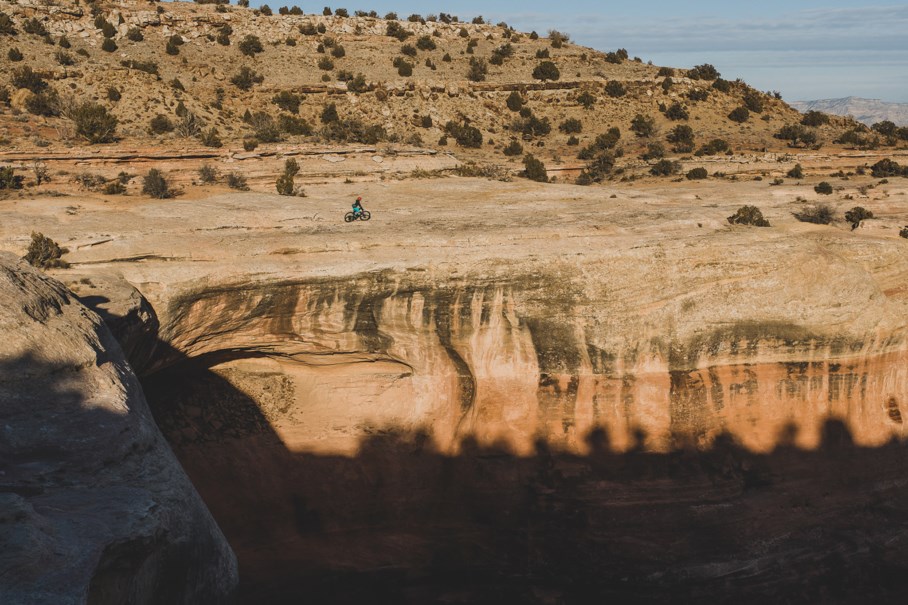
When I was a young girl, I remember sitting barefoot on the sandstone next to my grandma looking out towards the horizon. She said, “our Diné creation stories come from the land. Did you know our Mother Earth is a storyteller like us?” I smiled and responded with a child’s curiosity, “really?” She continued on to tell me a story about our Navajo sacred mountains being fastened to the earth by sunbeams and rainbows. Her words have stayed with me as I’ve grown older. These ancient stories are ever-present in the landscape. As I ride amidst sunbeams across the land or a spring rain as the sun shines knowing I’m inside a rainbow, I feel the power of my existence hinging on the interconnections between the natural world, myself, and these stories. They become a part of me. The wind created by my movement on the bike feels like giving breath to Mother Earth for her to speak and be heard.
Riding inherently creates narratives because of people, and the land, so we must learn to act in solidarity with both.
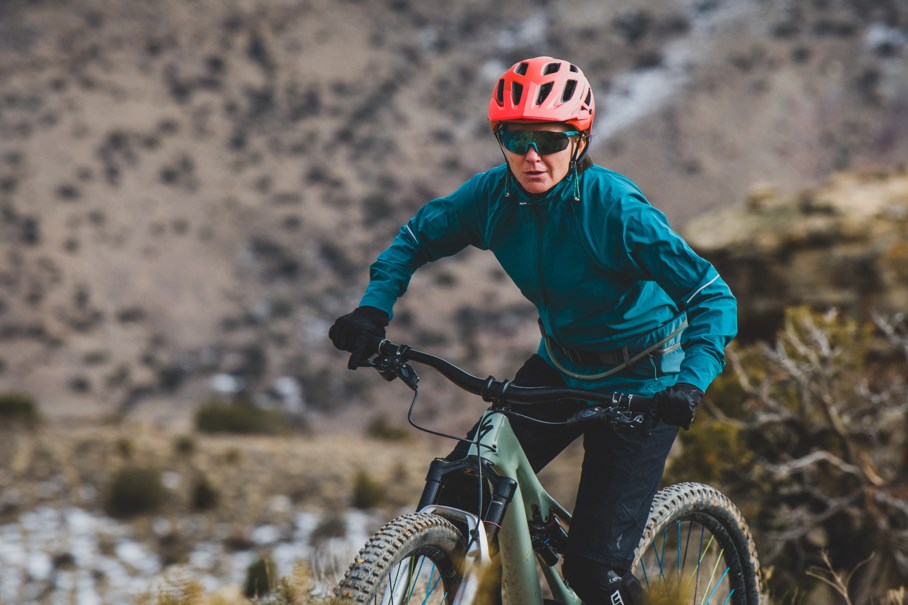
For thousands of years, Indigenous women have understood the interconnectedness of all people and all life upon the earth. Today, they still play a central role in keeping, protecting, and nurturing our cultures and lifeways because their hearts are always listening to and leaning towards Mother Earth. Their wisdom sits in places and lives within the trails. Sometimes it finds its way into my cultural expression when I ride, such as wearing my turquoise necklace handed down to me from my grandma. It’s a reminder that our kinship with the land is everything. The long strand of stones strung from my neck represents who I am as a Diné woman, one who always walks in relation to the land since birth and matures in the wisdom of our traditional teachings over a lifetime. It hangs at the height of where my umbilical cord once was attached to my mother. Now, connected to Mother Earth, we live together in mutuality. Yet this relationship for Indigenous peoples, and our responsibility to care for her, has been and still is severely challenged.
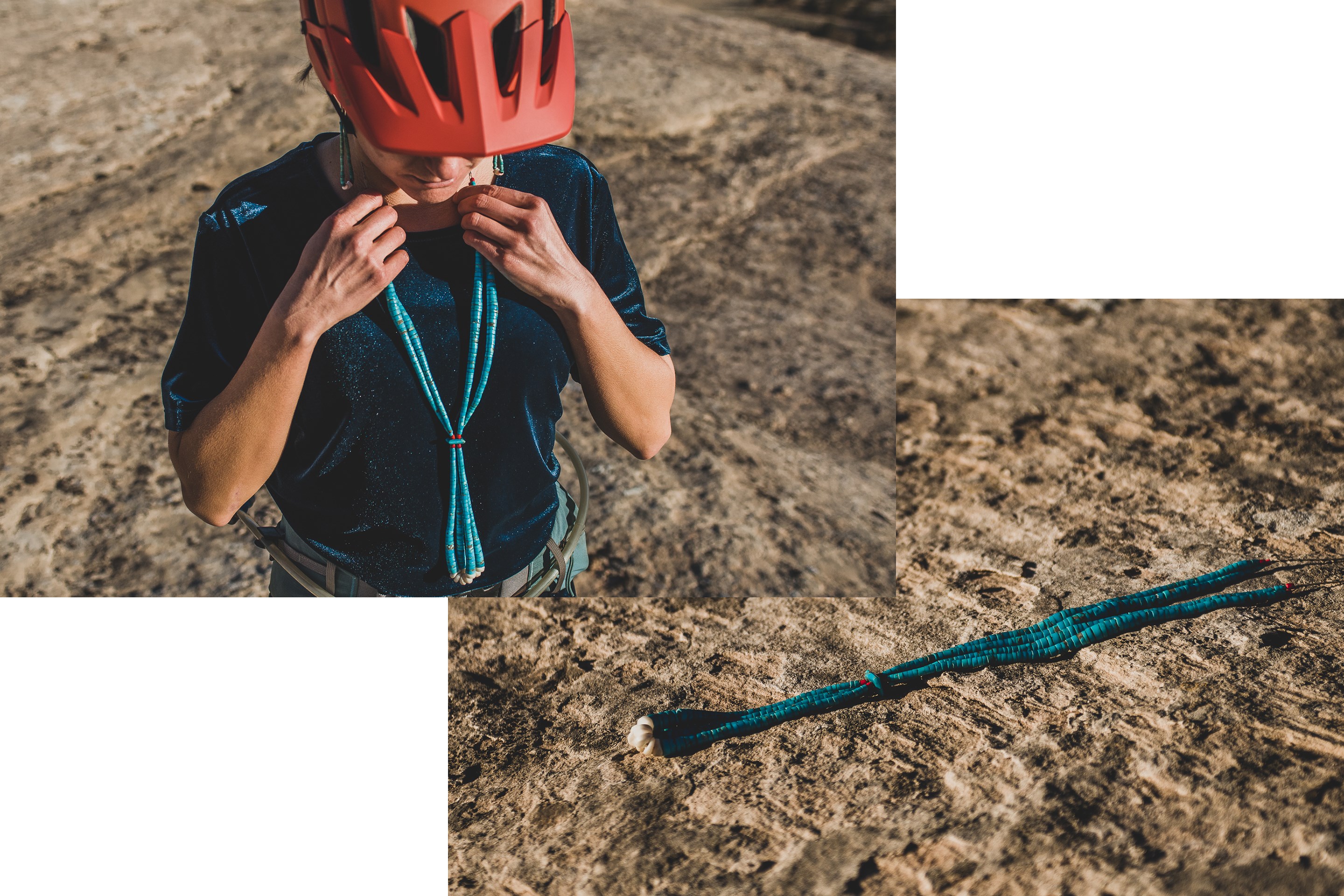
Western imperialism brought the notion of patriarchy to Indigenous lands disrupting the balance achieved in tribal communities where women held esteemed roles to keep and protect our cultural traditions. Colonization, systematic oppression, and capitalism continue to disrupt our reciprocity with Mother Earth, resulting in the current exploitative and destructive relationships that treat the land as a commodity rather than a living being.
This is why today Indigenous women are leading change towards reconnecting to a reality that our communities once knew – where land stewardship lived unhindered. Their work reflects the many ways we jointly depend on the Earth as Indigenous peoples. They include efforts such as reclaiming ancestral remains, advocating for traditional conservation practices, forest stewardship, preserving languages, and traditions, ensuring food sovereignty, protecting our water, creating land trusts, fire management, caring for ecosystems, climate action, and activism for land policies that respect Indigenous rights. While this isn’t an exhaustive list, it is clear this is environmental justice. This is land stewardship. Across North America and the world, these women collectively symbolize a much-needed shift towards restoring balance and mutuality with the land. They bring a perspective to humanity that doesn’t just benefit their own nations, but the entire earth.

The human-earth relationship is undeniable as mountain bikers. I challenge you to consider what it means to have a connection with the land that is based on reciprocity. I believe the earth underneath our tires can be the common ground that opens us to other diverse perspectives and empowers us to shape a bike industry that acts in solidarity with Indigenous peoples and the land we ride on. These actions can directly address the invisibility we experience as Indigenous cyclists and create spaces in the industry that are truly centered around justice, diversity, equity, and inclusion— a necessity to increase Indigenous participation in cycling. As an Indigenous woman athlete, one of the ways I advocate for this solidarity is through my work with race event planning staff to guide them beyond just incorporating Land Acknowledgements at events and include additional steps towards building meaningful relationships with Indigenous communities whose territories these events are held on.
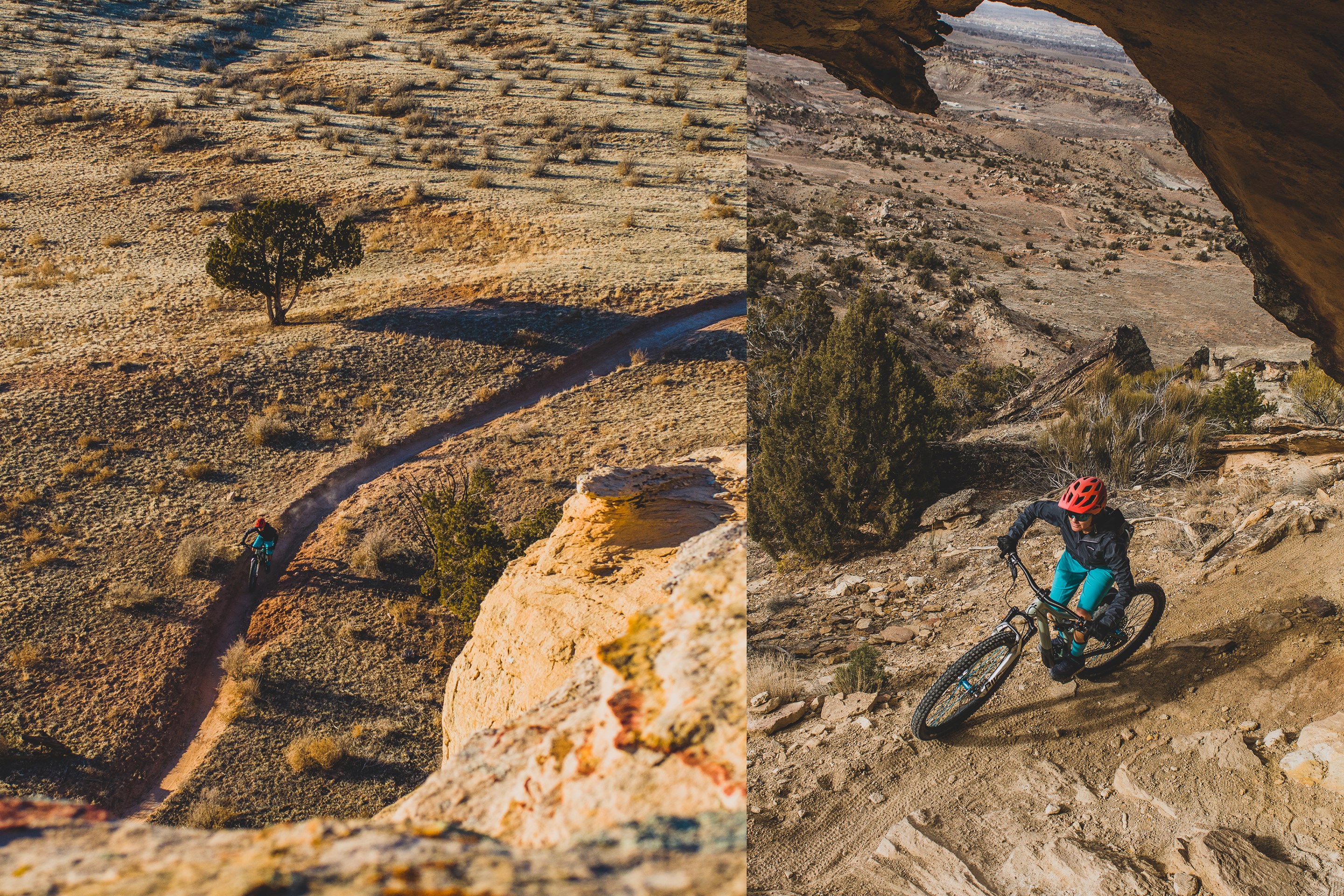
We can’t talk about riding without talking about place. This is why as cyclists, we are positioned to create new practices that expand the idea of place to also include Indigenous peoples who depend on the land for their cultures and lifeways. If there is anything we can learn from Indigenous women, it’s that the benefits of caring for the land touch every aspect of our life.
Next time you ride, remember Mother Earth is already teaching you how to lean into her. She moves with you along the trail, but it’s ultimately up to you how you choose to stand in relation to the land.
Author's Note
Indigenous communities have always honored women as leaders and viewed gender as fluid, multi-faceted, and outside the imposed Western binary we know today. Therefore, Indigenous Women in this essay refers to Indigenous women, femmes, transgender, two-spirit, and gender non-conforming people.
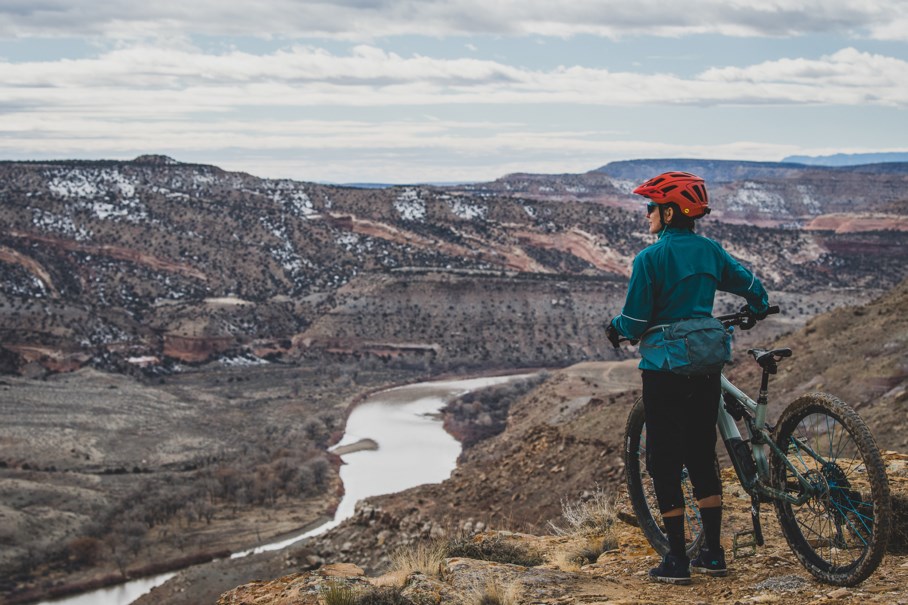
SRAM is donating $5,000 USD to the Ute Land Trust on behalf of Renee, in honor of her piece for International Women’s Day. Established in "2018 by the Business Committee of the Ute Indian Tribe, the Ute Land Trust was formed to assist in the healing of the deep wounds left by the injustice of the violent removal of the Ute Indian Tribe from ancestral lands in Utah, Colorado, New Mexico, and Arizona.” (Our Mission. Ute Land Trust, Ute Indian Tribe, www.utelandtrust.org). Mountain bikers have enjoyed accessing the trails in these regions for years to ride our bikes, and RockShox and SRAM have researched and developed products using the same land for just as long.
“Donating this money to the Ute Land Trust is only one of many acts of reparation that contributes to the process of reconciliation with the original stewards of the lands mountain bikers are privileged to access,” says Renee. “Reconciliation is not step-wise, it's more of a process or a framework that includes many ways or acts of reparations that ultimately must be Indigenous-led, have our involvement, and be specific to each unique tribal nation.”
